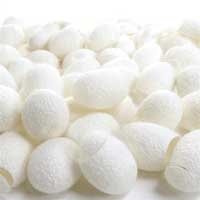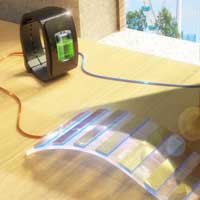 Engineers build high-performance non-reciprocal devices on a compact chip, paving the way for applications from two-way wireless to quantum computing.
Engineers build high-performance non-reciprocal devices on a compact chip, paving the way for applications from two-way wireless to quantum computing.
Thursday, May 21, 2020
'One-way' electronic devices enter the mainstream
 Engineers build high-performance non-reciprocal devices on a compact chip, paving the way for applications from two-way wireless to quantum computing.
Engineers build high-performance non-reciprocal devices on a compact chip, paving the way for applications from two-way wireless to quantum computing.
Implantable biosensor operates without batteries
 Researchers have revealed their new biodegradable motion sensor - paving the way for implanted nanotechnology that could help future sports professionals better monitor their movements to aid rapid improvements, or help caregivers remotely monitor people living with dementia.
Researchers have revealed their new biodegradable motion sensor - paving the way for implanted nanotechnology that could help future sports professionals better monitor their movements to aid rapid improvements, or help caregivers remotely monitor people living with dementia.
Researchers report new method for characterizing materials that might eventually help store energy
 As the search for materials to efficiently address energy storage and transport needs continues, researchers report new techniques for characterizing complex materials with the potential to overcome these challenges.
As the search for materials to efficiently address energy storage and transport needs continues, researchers report new techniques for characterizing complex materials with the potential to overcome these challenges.
Membrane nanopore transport gets picky
 Trying to determine how negatively charged ions squeeze through a carbon nanotube 20,000 times smaller than a human hair is no easy feat. Not only did scientists do that but they found that those ions are unexpectedly picky depending on the anion.
Trying to determine how negatively charged ions squeeze through a carbon nanotube 20,000 times smaller than a human hair is no easy feat. Not only did scientists do that but they found that those ions are unexpectedly picky depending on the anion.
Ultrasonic technique discloses the identity of elastic constant of graphite crystal
 Scientists evaluated the interplanar bond strength of graphene by measuring the elastic constant of graphite, demonstrating that the elastic constant of monocrystalline graphite was above 45 gigapascal, which was higher than conventionally believed.
Scientists evaluated the interplanar bond strength of graphene by measuring the elastic constant of graphite, demonstrating that the elastic constant of monocrystalline graphite was above 45 gigapascal, which was higher than conventionally believed.
Novel device harnesses shadows to generate electricity
 Researchers are giving shadows a positive spin by demonstrating a way to harness this common but often overlooked optical effect to generate electricity. This novel concept opens up new approaches in generating green energy under indoor lighting conditions to power electronics.
Researchers are giving shadows a positive spin by demonstrating a way to harness this common but often overlooked optical effect to generate electricity. This novel concept opens up new approaches in generating green energy under indoor lighting conditions to power electronics.
Novel nanostructure stimulates growth of stem cells for Parkinson's disease treatment
 Researchers have invented a nanostructure that can stimulate neural stem cells to differentiate into nerve cells. They found that the transplantation of these nerve cells into rats with Parkinson's disease progressively improved their symptoms, with the new cells replacing damaged nerve cells around the transplantation site.
Researchers have invented a nanostructure that can stimulate neural stem cells to differentiate into nerve cells. They found that the transplantation of these nerve cells into rats with Parkinson's disease progressively improved their symptoms, with the new cells replacing damaged nerve cells around the transplantation site.
Subscribe to:
Posts (Atom)
